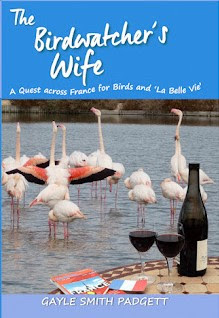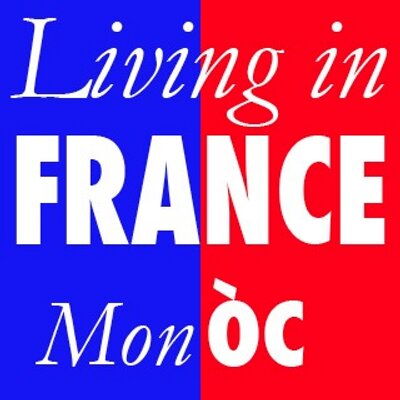Just like many of us here in Provence, Sharon deRham was fascinated by the story surrounding the Roman barge (or "chaland") that was pulled from the depths of the Rhône River at Arles nine years ago. An American living full time Provence--who worked as a tour guide for many years--Sharon has a particularly keen interest in Roman history and she followed the whole saga closely: the raising and meticulous restoration of the boat; the building of the special museum wing to house it. Almost immediately after the exhibit opened to the public, Sharon's tour clients started asking to see it...so she undertook even more in-depth research into Roman life in Arles, the chaland and the hundreds of artifacts pulled up with it. "The Chaland Antique Arles-Rhône 3" is a stunning exhibit in a fantastic museum that travelers in Provence often miss. I asked Sharon to tell us about it...and this is what she sent.
The only intact Roman ship ever found in the entire world, it still had its navigational equipment, cargo and kitchen. Other ancient ships have been brought up, of course—the Stockholm VASA, some Viking ships in Oslo—but these are not nearly as old as the Arles-Rhône 3.
Historians and archeologists think that a flash flood caused the boat to escape its mooring near Arles and sink with its cargo. The boat was buried, “fossilized” in the silt and sand of the riverbed which preserved it, protecting it from oxygen and bacteria.
Then the chaland was put into a warehouse, cleaned and kept moist before being sent to Grenoble. There it underwent treatment and restoration so the wood wouldn’t shrink or crack. Its 1,700 cast iron nails were removed and replaced to avoid acidification of the wood. Scientists have been able to date the oak, fir and pine used in the construction; the fir tree used in the sides of the barge was about 300 years old when cut.
The chaland is shown in a long trench to approximate its look on the river. Also on view are part of its 30-ton cargo of building stones and 450 other objects found in the river, including a large collection of amphorae, which were the most frequently used containers for shipping; they're displayed chronologically alongside the boat. Each is displayed with info on what it carried: wine, olive oil, salted fish, etc. There's a cut-off dolium (a terra cotta pot used as a barbecue), coins, dishes and much more.
On one side of the room, large windows overlook the Hortus, a Roman inspired garden. Other windows overlook the Rhône, lending a nice synergy to the chaland experience.
The MDAA is known as having the best collection in France of objects from the Roman period. In 2007, another discovery from the Rhône at Arles became a worldwide superstar: a bust of Julius Caesar, who founded Arles in 46 B.C. It may also be the only remaining statue of Caesar carved during his lifetime. Although there is some controversy regarding whether or not the bust really represents Caesar, the French Culture Ministry confirms that the life-sized marble bust is the oldest known representation of Caesar and that it dates from the creation of Arles in 46 B.C. It shows a somewhat aging man, with facial wrinkles and deep creases along his nose. The bust had been on loan to the Louvre but recently returned to the MDAA.
Musée Departemental d’Arles Antique
Avenue 1ère Div Français Libre
13200 Arles
+33 (0) 4 13 31 51 03
Closed January 1, May 1, November 1 and December 25.
Guided museum visits are offered in French on Sundays at 3 p.m. and daily during school vacations. They may also be offered in English; call the museum to inquire. Sharon can lead tours of the MDAA and the chaland exhibit. For her availability and pricing: sderham@sonic.net.
Photos: (1-3) The chaland nestled into its safe perch, designed to replicate the way it once sat in the water. Crowds flocked to see it opening weekend...and have ever since. The exhibit is permanently on view. (4-8) Diving for, raising, treating and restoring the chaland. (9) Some 450 other artifacts were brought up with the chaland; many are on view alongside it. The collection includes amphorae used as containers for shipping wine, oils and food, plus coins, dishes, vessels of all sizes and much more. There are still hundreds and maybe thousands of Roman artifacts still underwater in the Rhône at Arles, due to the high cost of raising, restoring, storing and exhibiting them. (10) The bust of Caesar, also on view at MDAA, was a major find; Caesar founded Arles in 46 B.C. The bust was on loan to the Louvre for a while but now Caesar's back in Arles, not far from where he was found. (11) The statue of Neptune found in the Rhône in 2007 dates from the early 3rd c. B.C. (13, 14) Three articles about the chaland appeared in the French edition of National Geographic in 2011 and '12. A 16-page version of the story then appeared in English, in 170 international editions, in April, 2014, and it has since been translated into 36 languages for 58 other countries. Here, the cover of the US edition...and the Georgian edition which shows the handle of a bronze pot found with the chaland. The stories were illustrated with photos by Arles-based photographer Remi Benali. A special 64-page issue of National Geographic is available in French in the museum shop. (15) The MDAA (aka the Musée Bleu or Blue Museum) sits right on the Rhône, adding a lovely synergy as the artifacts were pulled from these very waters. On the lawn outside the museum, you’ll see gardens fashioned in the style of the old Roman Circus, which once sat just adjacent. The MDAA is a wonderfully accessible museum, home to one of Provence's most important collections of Roman antiquities including a world-class collection of statues, and sarcophagi. It also has wonderful series of maquettes (miniatures) portraying Arles during the Roman period. All photos are © Remi Benali except diver photo which is ©Teddy Seguin.
To read the National Geographic story about the chaland and see more great photos, click here.
Update: Guest blogger Sharon deRham no longer works as a tour guide in Provence but if you want to reach her directly: sderham@sonic.net.




























































.jpg)























+08-06-2013+18.11.jpg)
+05-21-2013+16.59.JPG)


+08-06-2013+18.07.JPG)
+05-21-2013+17.20.jpg)






























